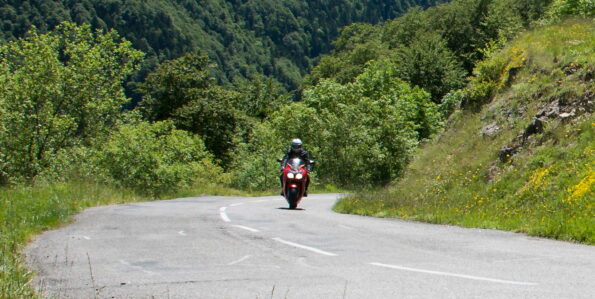It depends on which side of the road you drive on. In countries that drive on the left, there’s slightly more wear on the right-hand side of the tyre, and vice versa for countries that drive on the right.
It’s more noticeable on powerful bikes than smaller bikes because of the extra acceleration and braking forces which go through the tyres and, of course, the softer the tyre, the more quickly you’ll notice the wear.
How the road slopes: the camber
Roads are usually engineered to slope away from the crown (the centre line) to the edge, and this is called camber. It’s so that water drains away rather than ponding. This slope means that more of the tyre is in contact with the road on the crown side. When driving in the left-hand lane, this means the right-hand side of the tyre.
When you accelerate and brake, more forces go through this side of the tyre.
Bends and roundabouts
In left-drive countries, the right-hand turns wear the bike more. You can see further through the corners which means getting on the power earlier and carrying more speed. Roundabouts have adverse camber (the road slopes towards the outside of the roundabout), meaning more wear in the direction you are leaning to turn. Roundabouts make a right-hand turn longer than it would ordinarily be if it was a simple right-turn into a side street.

